Qantas Perth flight: Everything you need to know
Complete Guide to the 9,000-mile-plus Heathrow-Perth link
Your support helps us to tell the story
From reproductive rights to climate change to Big Tech, The Independent is on the ground when the story is developing. Whether it's investigating the financials of Elon Musk's pro-Trump PAC or producing our latest documentary, 'The A Word', which shines a light on the American women fighting for reproductive rights, we know how important it is to parse out the facts from the messaging.
At such a critical moment in US history, we need reporters on the ground. Your donation allows us to keep sending journalists to speak to both sides of the story.
The Independent is trusted by Americans across the entire political spectrum. And unlike many other quality news outlets, we choose not to lock Americans out of our reporting and analysis with paywalls. We believe quality journalism should be available to everyone, paid for by those who can afford it.
Your support makes all the difference.Nine thousand miles, 17 hours, 116 degrees east, 83 degrees south: the longest nonstop scheduled passenger flight ever from a UK airport departs from Heathrow on Sunday 25 March, destination Perth in Western Australia.
Aircraft have been flying from the UK to Australia since 1919, but regular passenger services using airliners operating from airports, rather than seaplanes, began only after the Second World War.
When the “Kangaroo Route” began in 1947, the journey from London to Sydney took four days. With limited range, aircraft had to refuel in Rome, Tripoli, Cairo, Karachi, Calcutta, Singapore and Darwin. In 2018, Australia is accessible from Britain faster than ever.
Do the flying public want it? What will passengers experience? And where next for ultra-long-haul? Your questions answered.
How far is it?
The shortest distance from Terminal 3 at Heathrow to Terminal 3 at Perth is 9,009 miles (14,498km). But the flight will go further, due to following stipulated airways (routes in the sky assigned by air-traffic control), avoiding bad weather, taking advantage of favourable winds and geopolitical factors. Airspace regarded as dangerous will be given a wide berth. The most direct track crosses the disputed Crimea region and the Caucasus.
There may even be a financial consideration of avoiding overflying rights: the straightest line traverses the entire length of Iran, which levies high charges for use of its airspace.
Additional miles will be added at either end of the route. Right from the start, the plane will stray from the shortest path between two points: assuming it takes off into the prevailing westerly wind at Heathrow, it will initially head away from Perth.
How long does it take?
From London, the trip is scheduled to take 16 hours 45 minutes – leaving at 1.15pm local time, arriving in Perth at 1pm the following day. Based on the quoted distance, the average speed will be 538mph — almost nine miles a minute.
In the other direction, departure from Perth is at 6.45pm, arriving at Heathrow at 5.05am – a journey of 17 hours 20 minutes or an average of 521mph, slowed by the prevailing wind.
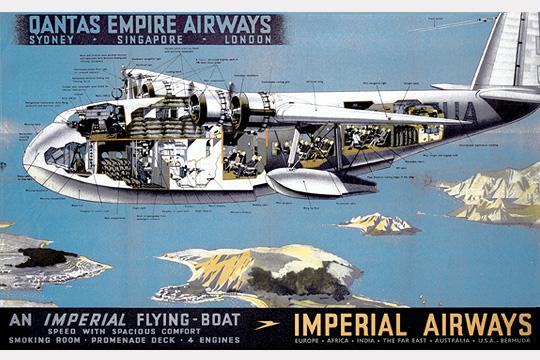
How much time does it save?
Compared with the fastest existing one-stop connections, on Qatar Airways via Doha and Emirates via Dubai, the new Qantas flight is nearly three hours quicker. The time saving comes from three elements.
1: Flying a more direct track – though remarkably a stop in Dubai or Doha adds less than 50 miles to the shortest point-to-point distance, representing only a few minutes’ flying time.
2: The time taken descending, landing, and taxiing at the intermediate airport, and the reverse on departure.
3: The connecting time to change planes, or the time taken to refuel the aircraft.
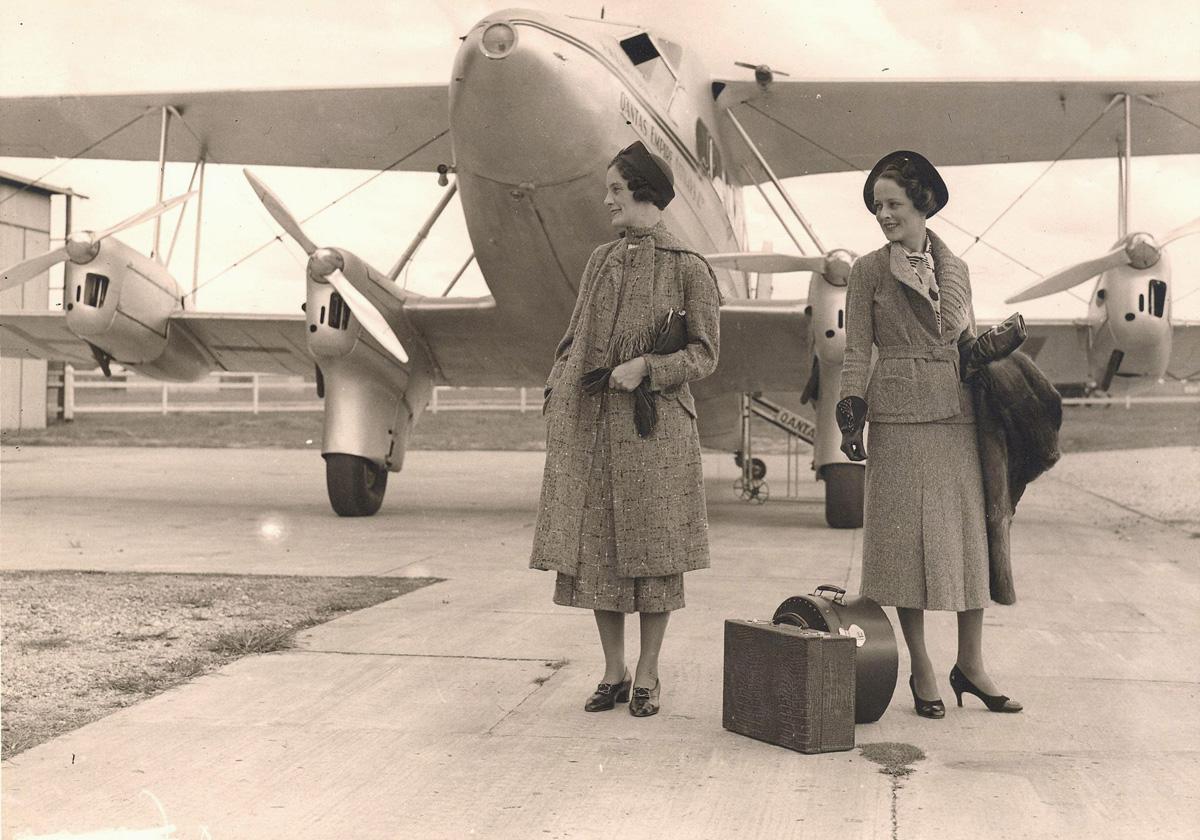
What’s the plane, how many seats are there, and what are they like?
The aircraft is a Boeing 787-9 Dreamliner, which has just entered service with the Australian airline. “It gives us a combination of flying range and passenger comfort that will change how people travel,” says Qantas chief executive, Alan Joyce. It is more highly pressurised than most aircraft, and has bigger windows.
The 236 seats are not all equal. The plane has 42 business class “suites”, 28 premium economy seats and 166 economy seats. Mr Joyce says: “We’ve added a very high level of comfort in each of the cabins and a lower seat count than most of our competitors. And we’re making tweaks to our inflight service designed to help customers enjoy the journey more.”
In economy, seats are nine abreast with a 3-3-3 configuration, meaning one in three passengers has a middle seat. When the 787 was being developed, it was envisaged as a eight-abreast 2-4-2 formation, with no seat more than one seat from the aisle. But almost every operator has gone for nine abreast.
How much does it cost?
That depends on the class you travel in, and when you travel. For some dates in April, the return trip in economy costs £828; in premium economy, £2,732 (more than three times as much); in business, £5,127 (six times the economy fare). A more usual ratio is for premium economy to cost twice as much as economy, and for business to be double that again. But it appears the premium that passengers (or their companies) are prepared to pay for comfort is much higher for an ultra-long-haul flight.
At peak travel times, especially Christmas/New Year, the economy fare will be much higher. Departing Heathrow on 22 December 2018 and coming back two weeks later, the cheapest ticket is currently £2,171 return.
What will passengers eat?
Going east, the first of three main meals, a late lunch, is likely to be served over Germany, with dinner over the Arabian Sea portion of the Indian Ocean — halfway through the flight. Passengers will be served breakfast two hours before touchdown at Perth.
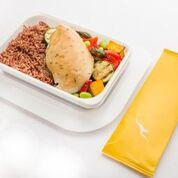
The menu has been designed with the help of nutritional biologists.
“Qantas’ new menu incorporates the latest scientific knowledge on nutrition and hydration and our scientists are excited by this opportunity to discover how the wide variety of influences work together during long-haul flights,” said Professor Stephen Simpson, academic director of the University of Sydney’s Charles Perkins Centre.
So passengers can expect “lighter meal options” and “dishes which feature ingredients that promote hydration such as green leafy vegetables, cucumber, strawberries and celery,” says Qantas. Some ingredients (such as chilli) will “tailored” to particular times of the day, but that of course begs the question: what the heck is the time for the en-route global traveller.
Dishes in business class include seared Cone Bay Barramundi with herb garlic potatoes, broccolini, lemon, olive and almond salsa, while in economy it’s a choice between chicken or beef.
Twelve cabin crew will be onboard, though not constantly on duty – rest breaks are assigned. On shorter routes, the normal complement is 10.
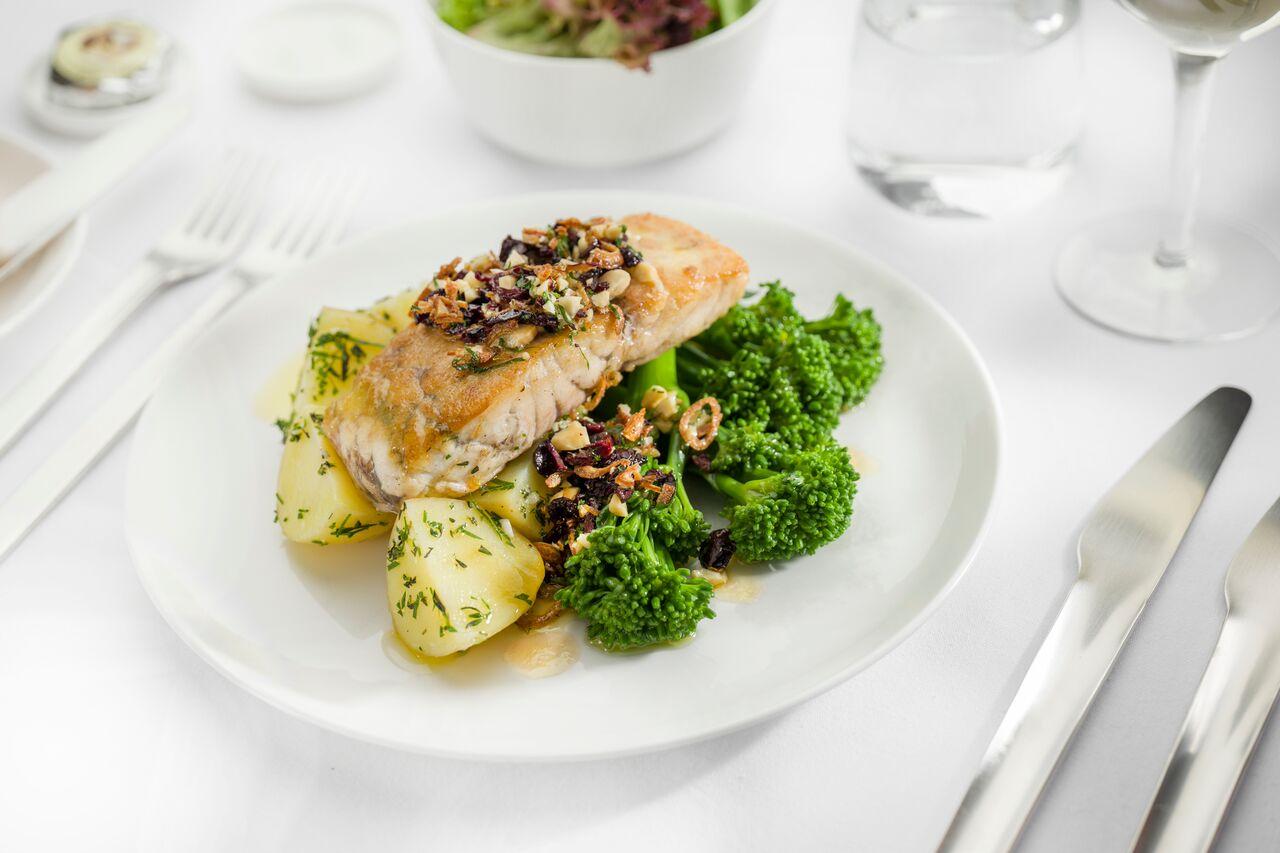
And drink?
For many Qantas passengers, the standard drink choice is between white and red. But they may find themselves steered away from wine to healthier options.
These include “organic kombucha by Remedy, a live cultured, sparkling drink full of natural probiotics that assist with digestion”; lemon verbena chamomile and lemongrass herbal tea; cold pressed juice shots; and a “hot chocolate bedtime drink with the combination of warm milk and chocolate containing the sleep-inducing amino acid Tryptophan to help prompt the body’s sleep cycle”. But hopefully not all in the same glass.
What happens if it can’t land at the destination?
At the London end, if bad weather or other issues intervene, there is no problem: dozens of suitable alternative airports are available. In Western Australia, it’s a different matter.
“Fog is a relatively uncommon occurrence at Perth,” say the airport authorities. But it adds: “Each year approximately a dozen fog events cause significant disruption to operations.” There are few alternatives; one is the Royal Australian Air Force base of Learmonth, 700 miles north of Perth; another is Adelaide, 1,300 miles further east.
How bad will the jet lag be?
Jet lag depends on the number of time zones crossed. The first flight takes place at the start of British Summer Time, which is also when clocks in Western Australia go back an hour. So the time difference is only seven hours (though at the end of October it will increase to eight hours when UK clocks revert to GMT).
Going east from London to Perth, the flight arrives at 6am British time — not a bad time to touch down, particular for passengers who can stay outdoors and awake in Australia’s sunniest state capital until sundown; if they can sleep at 11pm Perth time (4pm London time), that should be counted a success.
Coming home, it looks tougher. Departure time is 11.45am British time. Arrival at Heathrow is just after noon, Perth time, which corresponds to 5.05am British time, a fairly horrible hour wherever you are. Try staying awake all day.
Won’t most people prefer to stop off and at least stretch their legs along the way?
Some will. In a Twitter poll with over 1,200 responses, 40 per cent said they would prefer a nonstop, while 30 per cent would insist on an en-route pause. The remaining 30 per cent said it depended on price; strip those people out, and the nonstop crowd are 57:43 ahead.
For a one-stop option, the optimum stopover is Singapore; if you fly from Heathrow on one of the two morning flights on Singapore Airlines, or from Gatwick on Norwegian, you arrive in the city state early in the morning. Stay awake all day, then board the onward overnight flight, and you’ll be surprisingly well adjusted when you land — albeit completely knackered.
On board, can I Snapchat, tweet or Instagram my friends? Or tackle some emails?
No. Wifi is not fitted, though it is promised. A spokesperson for the airline said: “Qantas is in discussions with suppliers to develop an internet product for its international fleet than can overcome a number of technical, performance and coverage challenges, and deliver a consistent and high quality service that meets customer expectation.”
How green is it?
Not very green at all. The 787 is a fuel-efficient aircraft, and some fuel is saved by avoiding en-route touchdowns and take-offs. But the weight of the fuel needed for such a long haul adds up to a very high fuel consumption per person.
British Airways used to fly from Heathrow to Perth with a stop in Mumbai (or Bombay as it was then), almost exactly halfway along. Flying with just enough fuel to reach Mumbai, and refuelling with the correct amount to get to Perth, would use significantly less.
What are the world’s current longest flights?
The new route is not the world’s longest nonstop; the current record holder is Qatar Airways from Doha to Auckland (9,025 miles), just ahead of London-Perth. By the second half of 2018, Singapore Airlines plans to reinstate its 9,530-mile Singapore to New York route, which was dropped in 2013 because of high fuel costs.
From the UK, the longest hops are both Heathrow links: to Jakarta on Garuda Indonesia (7,275 miles) and to Santiago de Chile on British Airways (7,248 miles). The new Qantas flight is almost a quarter longer.
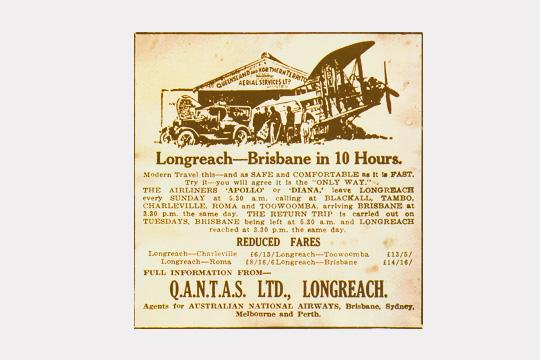
Will it make money?
“The early signs are very positive,” said Alan Joyce, the Qantas chief executive, when announcing the 2018 half-year profits.
Perth was chosen for the first Europe-Australia nonstop because it is the closest state capital. But it is also home to 184,000 British-born people, more than any other Australian city.
The 2014 Australian Social Trends survey says: “Around one in every eight residents of Perth was born in the UK.” This is the largest overseas-born population group found in any state capital in Australia. By comparison, Sydney and Melbourne each have around 150,000 British expatriates, representing just over 4 per cent of the population in either city.
Qantas believes the UK-born migrants living in and around Perth, and their relatives in Britain, will be happy to pay extra for a nonstop, same-aircraft service. Direct (one-stop) links between London and Perth ended a decade ago.
The Australian airline will have a monopoly on the nonstop route. British Airways has no intention at present of going into competition with Qantas with a nonstop flight, and low-cost, long-haul airlines such as Norwegian and Scoot do not have the business market that is needed for a route such as this.
Does the move signify a big expansion by Qantas?
No, it signifies exactly opposite. Until 24 March, the London-Melbourne link (QF9/10) was operated via Dubai using an A380 Superjumbo with 484 seats (including 14 ultra-comfortable first class flat beds). The Boeing 787 deployed on the same flight numbers, only via Perth to Melbourne, has fewer than half as many, just 236. And no first class.
Over the course of a year, the number of seats offered by Qantas on direct flights falls by 181,000 to 525,600.
While QF1/2 continues to link Heathrow and Sydney with an A380 (from later this month refuelling in Singapore, not Dubai), Qantas has not offered so few seats between the UK and Australia since the early 1970s.
What if I want to go further?
QF10 continues beyond Perth to Melbourne, and is the only direct (same plane) link between the UK and Australia’s second city. A typical fare in April is £944. The same fare applies to Adelaide, which has a good connection from Perth.
For the first time, Qantas can offer a one-stop link to Auckland, New Zealand, which puts it into competition with Asian and US airlines, as well as Air New Zealand.
Where next?
Qantas has asked Airbus and Boeing to come up with ultra-long-haul aircraft that could make London-Sydney viable. At 10,562 miles, it is one sixth longer than the new route to Perth.
The Australian airline may also consider some Continental European routes using the Boeing 787 from Perth. The European end need to be a big city in order to generate plenty of point-to-point traffic, but a good range of onward links will help. So Paris looks the first choice ahead of Amsterdam and Frankfurt.
An outside possibility is Athens-Melbourne. The distance is 9,265 miles, so only half an hour longer than London-Perth, and Melbourne claims to have the largest Greek population of any city outside Greece.
From the UK, the standout absentee from the ultra-long-haul map is Honolulu. The Hawaiian state capital is a key leisure destination and hub for the Pacific islands. Yet it is a complete pain to reach from Britain, typically involving nearly 12 hours to California and six more hours from there. The distance from London is the same as the Chilean capital, Santiago, comfortably reached in 15 hours by British Airways.
Heathrow to Honolulu would match the second-tier routes that are forming the basis of BA’s expansion in the US, with Austin and New Orleans existing examples. Alternatively, Virgin Atlantic might consider the link. A flight from Manchester to Honolulu would be shorter, and may be under consideration by Virgin Atlantic or TUI.

Join our commenting forum
Join thought-provoking conversations, follow other Independent readers and see their replies
Comments